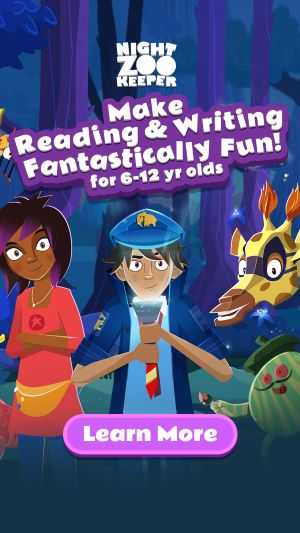Adjectives
Learn everything about adjectives!

Home > Resources & Worksheets > Vocabulary > Adjectives
Adjectives are words used to describe nouns, such as a character, setting, feeling, or action. These descriptive words are used in all types of writing, and have many different purposes. When an author uses adjectives, their descriptions are more vivid to the reader. As your child develops their vocabulary, their knowledge of different adjectives will help them improve their writing.
In this guide, we’ve compiled everything your child needs to know about adjectives, and included tips, activities, and resources to help them practice!
Adjective categories
Grouping adjectives into different categories can be done based on several characteristics. Here’s a list of adjective categories that we’ll get into further in the page:
- Comparative adjectives
- Compound adjectives
- Attributive adjectives
- Predicate adjectives
- Ordering adjectives
Comparative adjectives
Comparative adjectives describe nouns by comparing them to other nouns. They differ from regular adjectives in that they use comparison and can’t be used without the presence of another noun.
Examples of comparative adjectives
Comparative adjectives can typically be identified with the -er ending, but not always.
Here is a list of example sentences using comparative adjectives:
- She is so much faster than her twin brother.
- The pig is so much larger than the piglet.
- My bedroom is smaller than my classroom.
- That basketball is bigger than that tennis ball.
- This t-shirt is cheaper than the one I bought last week.
- The music sounds louder than it did earlier today.
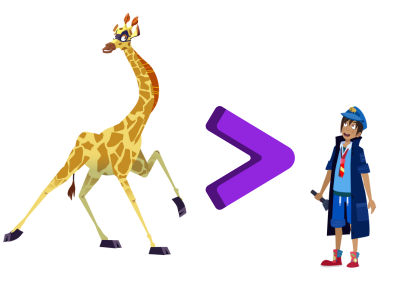
Compound adjectives
Compound adjectives are descriptive words that are joined together with a hyphen (-) to describe a noun. They can sometimes be three words, linked together by two hyphens!
Even though compound adjectives take on a different structure than regular adjectives, they still modify a pronoun or noun!
Examples of compound adjectives
- She is so cold-hearted, I can’t believe it!
- This harsh winter weather feels like it’s never-ending!
- He must have a happy-go-lucky attitude because of how carefree he is.
- I’ve heard that this restaurant has world-famous pizza!
- My mom is very quick-witted, it feels like she knows everything!
- I’m really easy-going, so I’ll eat wherever you’d like to!
Attributive adjectives
Attributive adjectives can’t be separated from the noun they’re describing by a linking verb - word order matters!
Examples of attributive adjectives
- The old chair.
- A red strawberry.
- An amazing trip.
Predicate adjectives
Predicate adjectives are separated from the noun by a linking verb. These can also be called subject complements, as their main purpose is to describe or slightly alter the noun.
Examples of predicate adjectives
- This cake is delicious!
- Will looks scared.
- Riya seems happy.

Postpositive adjectives
Postpositive adjectives are descriptive words that appear immediately after the noun. These are sometimes also paired with superlative, attributive adjectives.
Here are some examples of postpositive adjectives
- The best day possible.
- Do something helpful.
Ordering adjectives
When using multiple adjectives to describe something in your child’s writing, there is a specific order that the adjectives must follow if they are within the same sentence.
Rules for ordering adjectives
Article (the/a/an), number, opinion, size, shape, age, shade, origin, material, noun.
The two horrid, big, spidery, new, black, Nulth, metal, Voids.
Each adjective needs to be separated from the next one by a comma within the sentence. Here’s an example:
- The two, horrid, big, spidery, new, black, Nulth, metal Voids jumped toward the animals!
In this case, the order of the adjectives is as follows:
- Determiner, opinion, size, shape, age, color, place, material, noun.
If a sentence uses only a few adjectives from the above categories mentioned (number, opinion, size, shape, etc), they should still be ordered according to the table we have created above. Here is an example of a shortened version of the original sentence:
- The horrid, black, metal Voids jumped towards the animals!
Notice how the opinion category came first (the adjective "horrid") because we didn’t use a determiner. Then, we followed the same order for the other adjectives, just skipping the categories we didn’t use.
Adjectives & senses
You may be wondering what types of adjectives your child writer should use when they rely on each of their senses to describe something.
Here is an idea of what types descriptive adjectives your child can use for each of the five senses:
1. Sight
By using their sight sense, your child should come up with adjectives that describe the appearance of their surroundings. This may include shape, size, position etc.
2. Smell
When using their sense of smell, your child should come up with adjectives that describe how their surroundings smell. This may include how strong or weak the smell is, an analogy of what it smells like, and overall adjectives they see fit to describe the smell.
3. Taste
If your child is describing how something tastes, they should do so by comparing it to the tastes or textures of other things. Children often use simple adjectives to describe taste preferences, and it can be comparable to how they describe the smell of something.
4. Touch/Feel
When using their sense of touch, your child will come up with adjectives that describe how something feels to them. This may include textures, feelings, or abstract concepts.
5. Hear
When using their sense of hearing, your child will come up with adjectives to describe the sounds they hear around them. This may include describing the sounds of movement, background noise, voices, etc.
Here is an example from the Night Zookeeper story books of writing that uses the senses to describe:
Will Rivers the Night Zookeeper, together with Riya and Sam the Spying Giraffe, passed through the magical portal. Seconds before, they had said goodbye to the other giraffes and the lush coolness of the Whispering Woods. Now the three friends were standing in the fierce heat of the Fire Desert. Will felt his feet sinking into the fine sand.
He could feel the warmth of it through his shoes. Sweat was already beading on his forehead.
“Wow, it’s like stepping into an oven,” remarked Riya.
Activity & resource
Now that you know what to expect when your child uses their senses to describe something, have them try out the activity we have prepared. This activity asks the child to use their senses to describe the surroundings of a fictional character, which will engage their imagination as well.
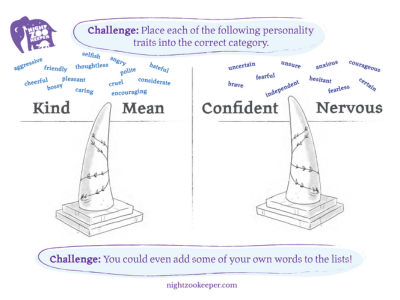
How Night Zookeeper can help
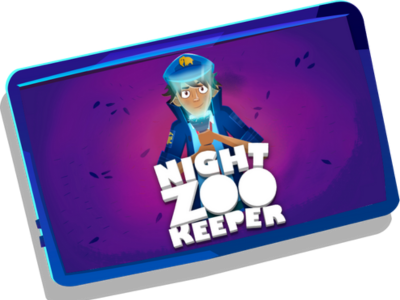
Night Zookeeper makes reading & writing fantastically fun for children aged six to twelve!
Our reading & writing program covers everything your child needs to know about grammar, spelling, punctuation, writing, and reading comprehension!
Sign up today to get a FREE 7-day trial!
More resources
Related articles

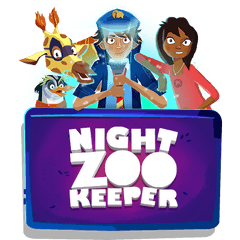
Make Reading & Writing Fantastically Fun!
- Award-winning reading & writing program for kids
- Improves spelling, grammar, punctuation & vocabulary
- Over 1,000 different learning games and activities



